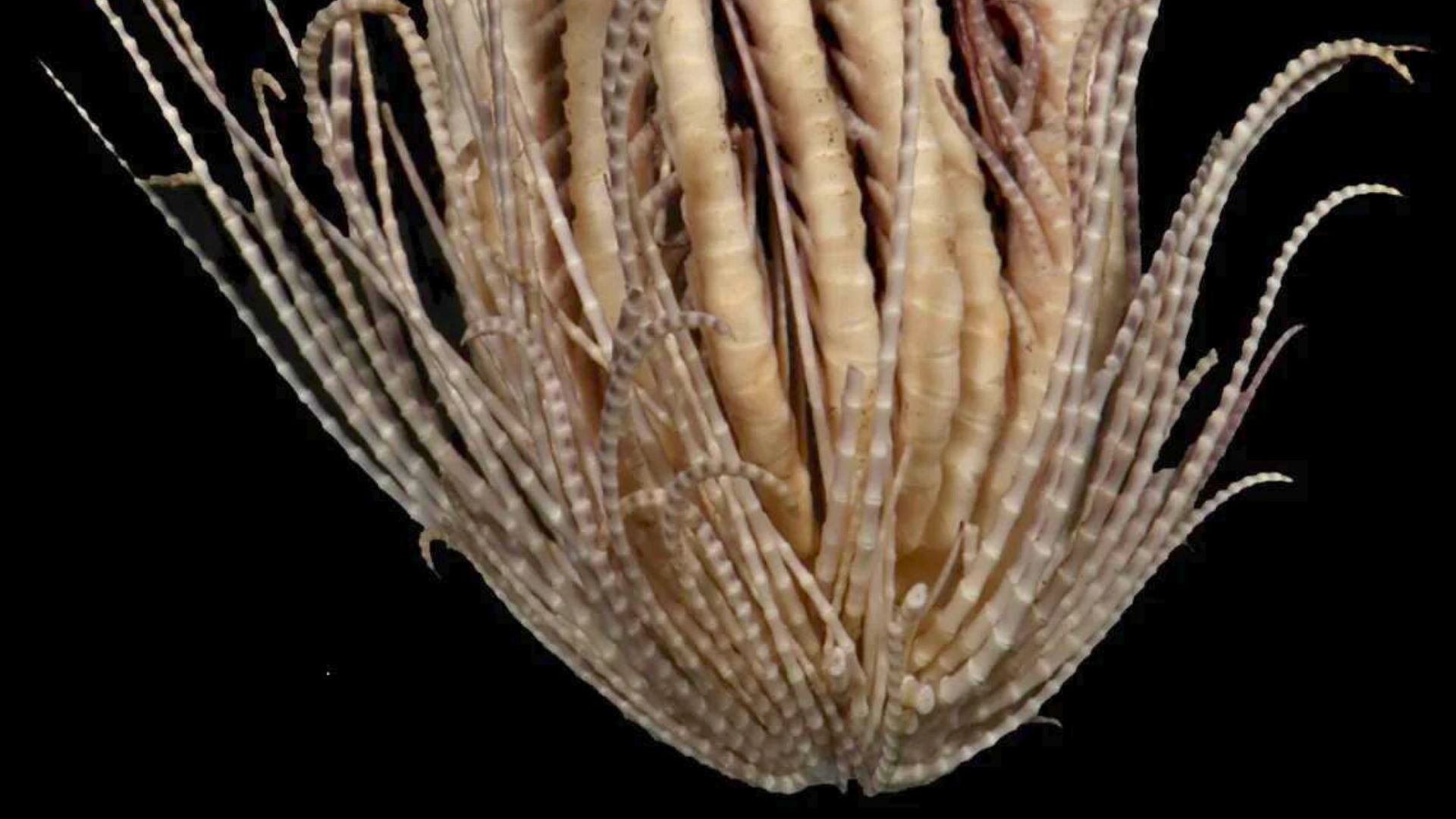Promachocrinus fragarius is unlikely. Its body with a texture close to that of a strawberry is extended by 20 arms. It belongs to a genus of which only one species had been listed so far.
Its discoverers named it Promachocrinus fragarius. It looks like it’s straight out of a sci-fi movie, but it’s just a newly discovered marine species — its study was published in July 2023, then spotted in August by Gizmodo.
Its shape is amazing. In its scientific name, the word fragarius refers, in Latin, to… a strawberry. This is due to the texture of his body. By zooming in, the scientists noticed that it approached that of a strawberry. Although the photographs suggest that it is rather white, its true color actually oscillates between light purple and dark red. Another characteristic, which we do not (fortunately) find in strawberries, is the presence of 20 arms. These animals live, according to the discoverers, at an aquatic depth of between 65 and 1,170 meters.
A new genus of sea animals to understand
The strange species is home to the deep waters of Antarctica. It was discovered during a series of expeditions carried out in the Southern Ocean between 2008 and 2017, which aimed precisely to identify new species within the genus Promachocrinus. This genus belongs to the crinoids, animals that look like plants made of feathers, but actually have a strong, articulated skeleton. They are sometimes nicknamed “feathered stars”.
The genus Promachocrinus was considered monotypic until now, this means that only one species was known, Promachocrinus kerguelensis. The objective of the expedition was to find others, which therefore constitutes a success with the famous fragarius (the most spectacular) and seven others. The discovery is all the more interesting as these marine animals are “cryptic”: we do not yet know much about them.
The identification and study of Antarctic marine species are hampered by logistical constraints: the area is not easy to explore, but to add new species, it is still necessary to be able to recover their DNA and, to to do this, find them and list them in sufficient numbers.
Subscribe for free to Artificials, our AI newsletter, designed by AIs, verified by Numerama!
